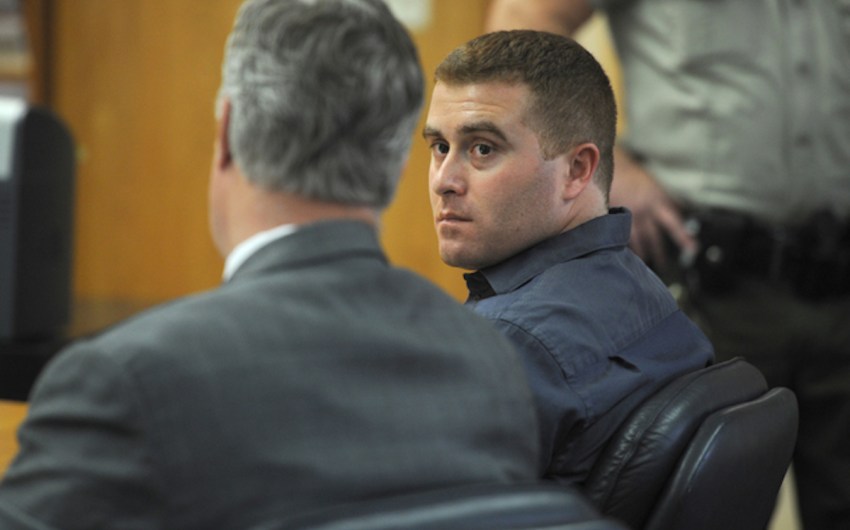Vides Was ‘Wildly Delusional’ at Time of Stabbing, Psychologist Testifies
Defendant Also Diagnosed with ‘Unspecified Dissociative Disorder’

A clinical psychologist testified in the Cora Vides trial this week that Vides was exhibiting signs of a dissociative disorder and was “widlly delusional” when she stabbed her friend in the neck in 2021.
Vides, 22, is charged with first degree attempted murder and has pleaded not guilty by reason of insanity. The guilt phase of the trial, where prosecutors must prove the attack was “willful, premeditated, and deliberate,” is expected to conclude this week with closing arguments.
Vides’s defense attorneys hired Dr. Jamie Rotnofsky three days after the stabbing to evaluate their client over Zoom. Vides was being held in Santa Barbara County Jail at the time. The two also met in person in August 2021 for a second evaluation after Vides’s family posted her $1 million bail.
Rotnofsky testified that Vides suffered from an “unspecified dissociative disorder,” adding she also demonstrated signs of “severe depression with psychotic features.” Psychosis, she said, is determined by the presence of hallucinations and delusions.
While Vides had not reported any hallucinations, she told detectives that “a bad thing” had made her stab the victim. “A delusion is holding a belief that is not based in reality,” Rotnofsky said.
Vides was mentally “decompensating” in the weeks leading up to the incident, Rotnofsky testified. “Decompensation is when someone is no longer functioning to their prior degree,” she said. “They are dissociated, feel like they are falling through the floor and are detached from their body.”
Vides’s premonitions and intrusive thoughts confirmed she was “widlly delusional,” at the time, Rotnofsky said, adding those with a dissociative disorder are often “unable to control their thoughts.”
Rotnofsky said Vides’s parents appeared ignorant of her condition. She described the “emotional neglect” of Vides’s father and poor mental health of her mother, which precipitated the family’s move from Washington state to Santa Barbara. Rotnofsky said the family’s history of mental health issues, which she called “genetic preloading,” was a relevant factor in her evaluation of Vides.
Rotnofsky also addressed the topic of self-harm. Vides, who had started cutting herself at age 12, continued to do so leading up to the night of the attack. “Self harm is a form of dysfunctional coping,” Rotnofsky said. Under questioning from prosecutor Kevin Weichbrod, who asked about a correlation between self-harm and violence, Rotnofsky acknowledged that “suicidal behavior can become homicidal behavior.”
In their cross-examination of Rotnofsky, prosecutors also presented evaluations made by another psychologist, who ruled out hallucinations or delusions prior to the attack. “Cora had a linear thought process, good insight and judgment, and had never experienced psychosis,” the other psychologist reported, contradicting Rotnofsky’s findings.
That report also aligned with the jail’s medical records, which, on the night of the attack, found that Vides had “no auditory or visual hallucinations.” In response to the screening question: “No one can make something that you don’t want to do,” Vides answered “correct.” She was also asked if someone, or a voice, told her to stab the victim. “No,” she responded.
The prosecution emphasized that no mention of dissociation was found anywhere in Rotnofsky’s initial 48-page report, and that she later revised her diagnosis after being retained by the Vides’s defense team. “Major depressive disorder is the only diagnosis consistent amongst all reports,” said Weichbord. “Not just in the ones retained by the defense.”
Weichbord also asked Rotnofsky about “goal-oriented behavior,” arguing that purposeful behavior toward achieving a goal is not consistent with “wildly delusional” conduct.
“Is it indicative of goal-oriented behavior to insist on someone coming over, having them lie down, having them stay in place, telling them to close their eyes, and covering them with a sweater?” Weichbrod asked, recounting the moments leading up to the stabbing. Rotnofsky responded, “Yes.”
“Is it indicative of goal-oriented behavior to continue an attack once it has already started?” Weichbrod asked, in reference to Vides trying to smother the victim after she pierced her throat. “Yes,” Rotnofsky replied.
The prosecution ended their questioning, claiming that the “bad thing” that drove Vides to stab her friend in the neck was not an “auditory hallucination, but a story unfolding.”
Closing arguments will conclude today, after which the jury will begin its deliberations. If found guilty, Vides faces a maximum possible sentence of 11 years to life in prison.










